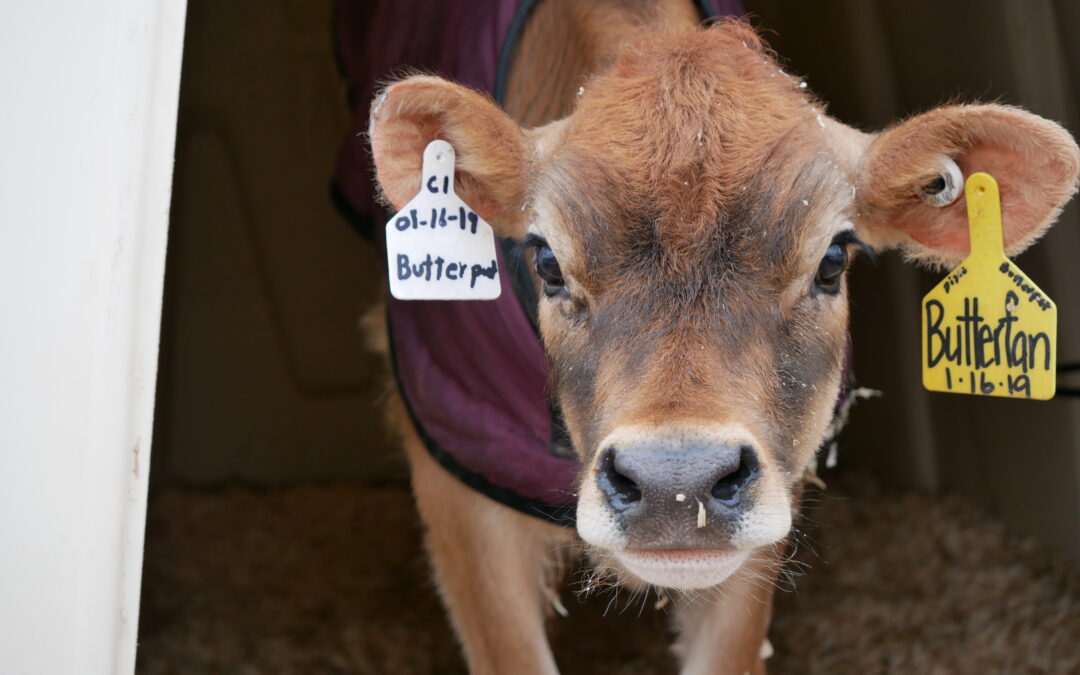Maintaining optimal calf growth and health during cold weather can be a delicate balance. Taking a proactive stance in keeping calves’ energy levels up, stress levels down, and facilities up to par can help your calves avoid winter growth slumps.
Use these management tips in your calf program to help meet their winter needs:
DON’T LET COLD HINDER GROWTH
As the seasons change, calves can suffer from cold stress sooner than you might think. Calves become cold stressed at moderate temperatures because they have a higher surface-area-to-bodyweight ratio than older animals. Even at a temperature of 60 degrees Fahrenheit, cold stress can impact the growth and health of dairy calves.
During periods of cold stress, calves require addition- al energy to maintain their body temperature and con- tinue growing. If their nutritional requirements aren’t met, they’ll utilize valuable energy stores, which can result in weight loss and impaired immune function. Implement a feeding program to support increased energy demands. Provide extra energy to the calf by adding a third feeding of milk or milk replacer (prefer- ably late in the evening) and increasing the amount of starter offered. Seasonal formulations of milk replacer
are designed specifically to meet the needs of calves during inclement weather.
KEEP WATER AND FEED FRESH
 Volatile weather can cause starter in buckets to go stale or to mold, which can lead to potential digestive upsets and calves going off feed. Keep calves eating and growing by ensuring that they always have fresh starter and water.
Volatile weather can cause starter in buckets to go stale or to mold, which can lead to potential digestive upsets and calves going off feed. Keep calves eating and growing by ensuring that they always have fresh starter and water.
Calf raisers often underestimate the level of dehy- dration associated with the lower relative humidity and dry air brought on by colder weather. Feed calves warm water between 100–105 degrees F. Cold water forces calves to use extra energy to heat the water to their core body temperature post-consumption.
PUT EMPLOYEES ON HIGH ALERT
Winter temperatures can cause calves to be more vul- nerable to disease challenges. Train employees to look for early signs of illness such as decreased feed intake and droopy eyes and ears. Checking calves more fre- quently during times of increased risk can also help employees quickly recognize a calf that’s experiencing a challenge.
MAINTAIN DRY AND DEEP STRAW BEDS
Deep straw bedding can help calves nest and con- serve heat. Use a 1–3 bedding scorecard to evaluate if bedding packs are deep enough based on how much of the calf’s legs show when laying down:
1 – All of the legs showing
2 – Half of the legs showing
3 – No legs showing
A score of 3 is ideal, and a score of 1 indicates it’s time to add bedding to the pack.
The knee test is a quick way to test if bedding is dry. If you put your knee down and it stays dry, your bedding is fine. If the knee comes away wet, it’s time to re-bed.
BALANCE ENERGY SOURCES
A common misconception is that increasing fat in the diet during cooler weather will make up for a calf’s increased energy demands. However, providing the correct balance of fat and carbohydrates is the key to achieving optimal energy intake. A 50 percent increase in calf milk replacer powder can yield a 50 percent in- crease in energy. Alternatively, a 100 percent increase in fat alone in the calf diet may only generate a 12 per- cent energy increase (NRC 2001).
Feed 2.5 pounds of milk replacer powder per calf per day to ensure they’re receiving enough energy.
DON’T FORGET POST-WEANED HEIFERS
Cold weather doesn’t only affect young calves. Calf raisers also need to address post-weaning calf manage- ment, especially in colder weather. To help cut down on the added stress of weaning, keep post-weaned calves in small groups for up to three weeks post-weaning. Help promote intakes post-weaning by maintaining a consistent diet and feed the same calf starter, through twelve weeks. Then, feed calves a grower feed as they transition to a diet higher in fiber.
When weather conditions change rapidly, it can wreak havoc on young calves that crave consistency. Help keep calves growing with these management tips and by working with your local calf and heifer specialist to build a winter calf plan for your farm.

